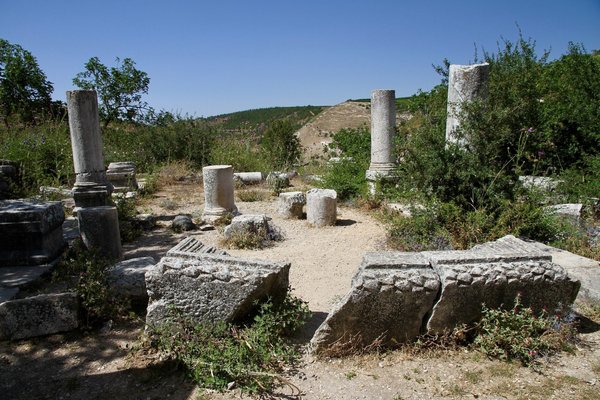Israel
Early Synagogues in the Galilee
The Early Synagogues in the Galilee were the first buildings to represent a monotheistic religion. In Galilee, about 50 remains of synagogues from late antiquity, the period from the fourth to the seventh century, have been found. Most notable are the remains of the synagogues in Bar'am, Korazim, and Capernaum.
Site Info
Official Information
- Full Name
- Early Synagogues in the Galilee (ID: 1470)
- Country
- Israel
- Status
-
On tentative list 2000
Site history
History of Early Synagogues in the Galilee
- 2000: Added to Tentative List
- Added to tentative list
- Type
- Cultural
- Criteria
Links
- UNESCO
- whc.unesco.org
All Links
UNESCO.org
- whc.unesco.org — whc.unesco.org
Community Information
- Community Category
- Religious structure: Jewish
Travel Information
Recent Connections
News
No news.
Recent Visitors
Visitors of Early Synagogues in the Galilee
- Alexander Lehmann
- alicemears
- Argo
- Assif
- Daniel Chazad
- Deffra
- Dimitar Krastev
- Dirk-pieter
- Evgenii
- GabLabCebu
- George Gdanski
- Hughes1920
- Ilya Burlak
- Jay T
- João Aender
- John Smaranda
- Jon Opol
- Maciej Gil
- nan
- Petri Jurescu
- Roger Ourset
- Ronbon
- Rudegirl
- sncjob
- Solivagant
- Szucs Tamas
- tony0001
- Vernon Prieto
- Veronica
- Walter
- YaroMir
Community Reviews
Show full reviews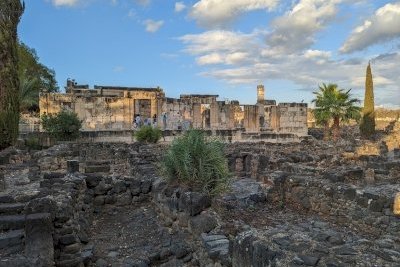
During our Israel trip, we visited two early synagogues: Korazim and Capharnaum.
Korazim, located north of the Sea of Galilee, boasts an ancient Jewish synagogue dating back to the 2nd to 4th centuries CE. The synagogue features elaborate decorative elements such as stone carvings and images of the Zodiac. The encompassing archaeological site also includes remnants of the town, some of which have been reconstructed or are undergoing reconstruction.
Capharnaum, an ancient town on the Sea of Galilee, is known as the "town of Jesus" in the New Testament. Its late 2nd or early 3rd-century CE synagogue features intricate decorative elements, including stone carvings and a colorful mosaic floor. Interestingly, the synagogue was built in competition with the nearby church of St. Peter, reflecting the tension between Jewish and Christian faiths at the time.
While Judaism predates Late Antiquity, the earliest synagogues emerged during this period due to the aftermath of the Second Jewish Revolt and the destruction of the Second Temple in Jerusalem by the Romans. These events left many Jews displaced and necessitated new ways of practicing their faith
For me, both sites were interesting. Korazim was the more intimate experience. Capharnaum felt crowded due to the tour buses of Christian tourists. Still, the sunset views of the Sea of Galilee were stunning.
OUV
When traveling around Israel, it's easy to notice how few actual "Jewish" world heritage sites there are. At present, the only two inscribed Israeli sites with a Jewish …
Keep reading 0 comments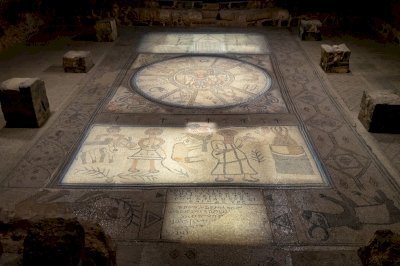
On my travels around Israel in November of 2019, I stopped by Bet Alpha National Park, which ended up one of my favorite ancient sites in the country (including many places that are already inscribed as WH sites).
Bet Alpha must be the smallest of all national parks in Israel - it is basically a single room of the ancient synagogue headlined by the primitive yet evocative mosaics on the floor. The 15-minute interpretive video – which started as soon as I entered the room, since I was the only visitor at the time – is a lighthearted dramatization of the origin of the mosaics, mixed int with an overview of the synagogue architectural features. It is definitely worth the time to see and listen to; as the explanations cover different parts of the mosaic, those components are lighted on the floor. After the movie ended, I had a few minutes to look over the mosaic and the remains of columns and supports under the full lighting.
The cost of the entry is but a few dollars, and if you have the "orange card" Israel Pass (which allows entry to almost every national park once within the space of two weeks) there is no additional cost. No guidance is needed for the visit, which in my case lasted less than half an hour.
The rest of the synagogues on this tentative submission are clustered near Tzfat or by the northern shore of Lake Kinneret. I was close …
Keep reading 0 comments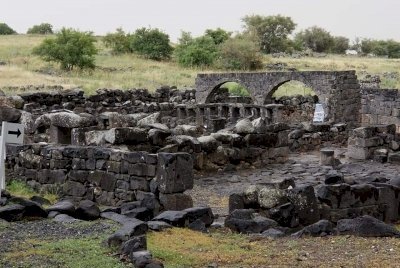
Back in 2018, I visited a great many sites in the Galilee region of Israel. While many were just the usual pilgrimage sites, I intended to visit a few destinations a bit off the beaten track. One of which was the ancient ruins of the town and synagogue of Korazim. It ended up being one of my favorite little places in Israel.
Korazim is not on the normal tourist circuit by the shores of the Sea of Galilee. The site lies in the hills above Capernaum and Tabgha, about a 15 minute drive away. I took private transport to get there, and as we approached, the basalt rocks were especially eye-catching. The contrast between the green sloping fields and the black outcroppings was strangely beautiful, and along with the stormy weather and lack of people, made for a unique aura even before entering. The parking lot was empty aside from a couple of other private cars. A short walk down the trail would show what all that black rock came to be used for: construction. Every block of the ancient town, said to date from the 4th century CE, was made of the same rock that protrudes from the ground all around.
While only foundations of most buildings remain, the old synagogue still stands, albeit not without damage. Many intricate basalt carvings used to decorate the building now lie on the floor or on pedestals, including the pediment of the facade. The structure still, however, forms an enclosed …
Keep reading 0 comments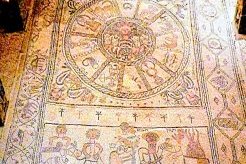
Of the 7 synagogues mentioned in the UNESCO T List description (Meron, Gush Halav, Navorin, Bar Am, Bet Alfa, Korazim and Capernaum) we visited Bet Alfa and Capernaum.
The one at Capernaum, as described in my review of the “Sea of Galilee and its Ancient Sites” is slightly overwhelmed by the Christian nature of the site. The sign on the Synagogue walls points to the fact that you are looking at “The Late 4th century White Synagogue built upon the remains of Synagogue of Jesus”. The significance of the latter arises particularly from a statement in the Gospels that Christ performed a Miracle in it (see Mark 1 21-28). The much later “White synagogue” is quite an elaborate (and partially reconstructed) structure with Corinthian columns
I will concentrate this review on the site at Beit Alfa. This isn’t so much about a “building” but consists primarily of a remarkably well preserved mosaic from around the early 6th C CE in “naïf” style. The mosaic was only discovered in 1928 when the local kibbutzniks were digging a water channel to drain the swamps of the area. The site is situated around 15 minutes by road from Beit She’an and in my view is very well worth taking in. It is another Israeli National Park, so your entry pass will get you in – or else it will cost 22 NIS for a visit which will take around 30-45 minutes.
The mosaic is completely …
Keep reading 0 comments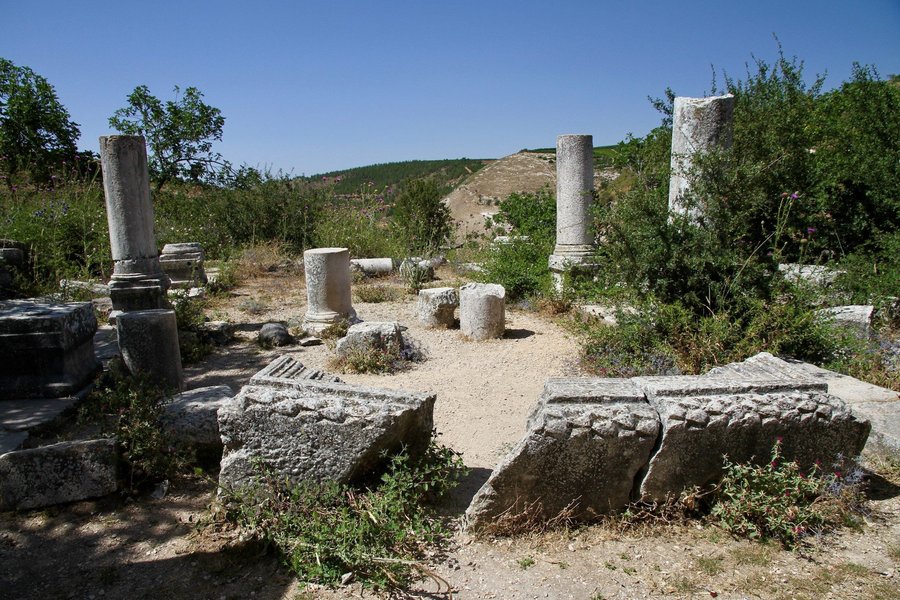
It is true the Galilee is crowded with early synagogues (Peki'in, Gush Halav, Meron, Amud, Baram, Navoria - just to name a few). The most impressive site I've been to is probably Capernaum near the Sea of Galilee also known for being the site of Petrus' house. The synagogue resembles a well preserved Roman temple and is also beautifully located near the shore. Another impressive building is the one in nearby Korazim. Synagogues with original mosaics are Beth Alpha, Hamat Tiberias, Maruth and Seppharis. These show the strong Roman influence on the Jewish culture of the time by combining Roman gods in the depiction of Biblical scenes. I haven't been to Maruth but the other three are impressive and probably unique. I think this nomination could fill a gap and be justified.
Keep reading 0 comments
